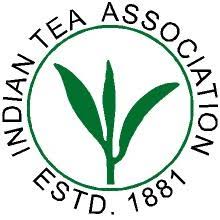Indian Tea Association facts for kids
 |
|
| Founded | 1881 |
|---|---|
| Location |
|
The Indian Tea Association (ITA) is a group that brings together people and companies who grow and sell tea in India. Its main office is in Kolkata, a big city in India.
Contents
History of the Indian Tea Association
The Indian Tea Association was started in 1881. Its main goal was to look after the interests of tea growers in British India. It also wanted to encourage more people to drink Indian tea. The first main office was in London, with other offices in India.
How the ITA Began
The ITA was formed in London in 1881. It had branches in Kolkata and Assam. The first leaders were Thomas Douglas Forsyth and Henry Hopkinson. The group included tea growers, tea company owners, bankers, and former British army officers.
Helping Tea Growers
Over about 30 years, the ITA became a very important group. It influenced government rules that affected tea farms. It also had a big impact on the province of Assam. For example, after the Morley-Minto Reforms in 1909, the ITA managed to get two seats for tea interests in Assam's government council. By 1912, the tea industry held three of the eleven elected seats. This meant they played a big part in how the local government was run.
Before a law about tea farm workers was passed in 1932, the government asked the ITA for their ideas. After many meetings, the government included the changes suggested by the tea growers. The ITA also supported Muhammed Saadulah, which helped him form the local government in 1937. He promised not to make laws that would directly harm the tea industry. His Labour Minister, Abdul Matin Chaudhury, also agreed to protect the tea companies' profits.
Research and Quality for Tea
In 1911, the ITA started the Tocklai Tea Research Institute. This institute is located in Jorhat, Assam. At first, scientists there focused on how to grow tea better and how to deal with pests.
Improving Tea Quality
In the 1920s, tea from other countries like Java and Sumatra started to be sold in Europe. To stand out, the Tocklai Institute began to focus on the quality of Indian tea. A chemist and meteorologist named C. R. Harler worked at the institute. He suggested creating a standard list of words to describe the different qualities of tea. This helped everyone understand and talk about tea quality better.

